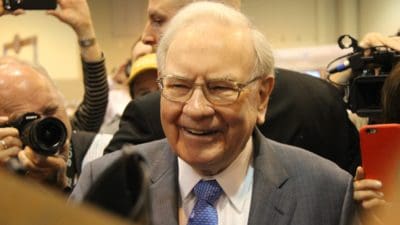Do you need to be a spreadsheet-wielding City analyst to buy winning stocks? I don’t think so. Nor do you need millions of pounds to get started. I reckon £1,000 plus a commitment to regular top-ups is enough for long-term investors to start building a useful portfolio.
However, I do believe you need to understand a few key investing terms in order to get the best results from the stock market. Today I’m going to look at three I believe you can’t afford to be without.
Valuation (P/E)
The most popular way to value shares is the price/earnings ratio (P/E or PER). This compares a company’s share price with its earnings (after-tax profit) per share.
The P/E gives us an idea of how many years it would take for a stock to ‘earn’ its purchase price in profits. For example, a stock with a P/E of 10 would take 10 years to earn enough profit to cover its share price.
A company with fast-growing profits is likely to have a much higher P/E ratio than one where profits are stable or falling. This is because investors will pay more when strong growth is expected, as they expect the share price to rise strongly.
What makes the P/E ratio so useful is that it allows us to compare the valuation of similar companies and find those which look cheap.
Dividend yield
Many big companies pay a portion of their profits out to shareholders each year. These are called dividends. A stock’s dividend yield is similar to the interest rate on a savings account and indicates the expected income from a share each year.
The yield is calculated by dividing the dividend by the share price. A dividend of 5p per share on a stock that costs 100p will give a 5% yield.
Not all companies pay a dividend, but those that do generally aim to increase their payout each year. However, this isn’t guaranteed and firms may sometimes need to cut or suspend their payouts.
To try and avoid cuts to your dividend income, look for companies where earnings per share are at least 50% higher than the dividend.
The dreaded EBITDA…
One term you will probably come across is EBITDA. This stands for Earnings Before Interest, Tax, Depreciation and Amortisation.
In theory, EBITDA is a useful measure of a company’s cash profits before various deductions.
In reality, these deductions can sometimes eat up almost all of a company’s EBITDA, leaving very little ‘real’ profit. Some companies are also fond of quoting “adjusted EBITDA”. This is a flattering measure which often excludes many significant costs.
In most cases, I don’t pay much attention to EBITDA. The only exception is when discussing a company’s debt levels, or gearing. The ratio of net debt-to-EBITDA is commonly used by banks to monitor companies’ borrowing levels.
As a general rule, I prefer to see net debt less than 2x EBITDA. Gearing higher than this can become problematic if trading conditions worsen.
What to do next
There’s a lot more I could say here, but I’ve run out of time and space.
In my view, one of the best places to start hunting for stocks is the FTSE 100 index of the largest companies on the London Stock Exchange. Here are a few suggestions to get you started.







